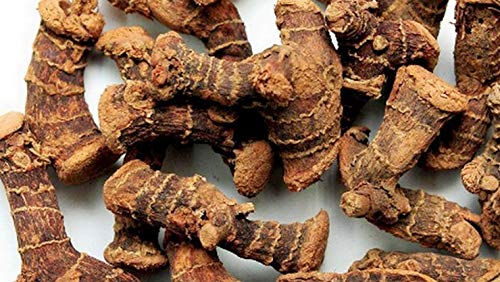Remedy #1 * Take a glass of water in a vessel. * Add a few Tulasi (Holy Basil) leaves and 1 teaspoon of pepper powder. * Bring to a boil and allow the water to boil for some time. * Strain, add honey and consume three times a day: in the morning, afternoon and evening.
Remedy #2
* Take a glass of water in a vessel. * Take a fistful of Thuthuvelai leaves (Climbing Brinjal) and a couple of Vethalai( Betel) leaves. * Tear them and add it to the water. * Bring to a boil and allow the water to boil for some time. * Strain, add honey and consume three times a day: in the morning, afternoon and evening.
Remedy #3
* Take a 2‑inch piece of dried Chitharathai (Lesser Galangal) rhizome. * Pound it using a mortar and pestle till it is broken to small pieces. * Take a glass of water in a vessel and add the pounded Chitharathai rhizome to it. * Bring to a boil and allow the water to boil for some time. * Strain, add panam kalkandu (palm jaggery) and consume three times a day: in the morning, afternoon and in the evening.
How to grow Thuthuvalai (Climbing Brinjal)

Thuthuvalai is used in Ayurveda and Siddha system of medicine. It is commonly used in the treatment of cough, cold, fever and asthma. Thuthuvalai can be planted in dry land with minimal rainfall. Get some good seeds from an organic store or from farmers and plant them in a pot. After the plants grows to a height of 30 cm, transplant those in your garden. The leaves have thorns and hence must be plucked carefully.
How to grow Chittarathai (Lesser Galangal)

Lesser Galangal grows well in tropical climate and fertile red loams to forests soil are suitable. Propagation of Lesser Galangal is vegetative by planting freshly harvested rhizomes. Freshly harvested rhizomes can be directly planted on the soil. Select rhizomes with at least two germinating buds (“eyes”). Dig a hole in your garden, plant the rhizome and cover the rhizome with soil. The soil should be well-drained but moist. Water to keep the soil moist, and apply organic compost once a month. Rhizomes can be harvested 18 months after planting. Harvested rhizomes are cleaned, cut into pieces of 5 cm length and dried.
Yorumlar